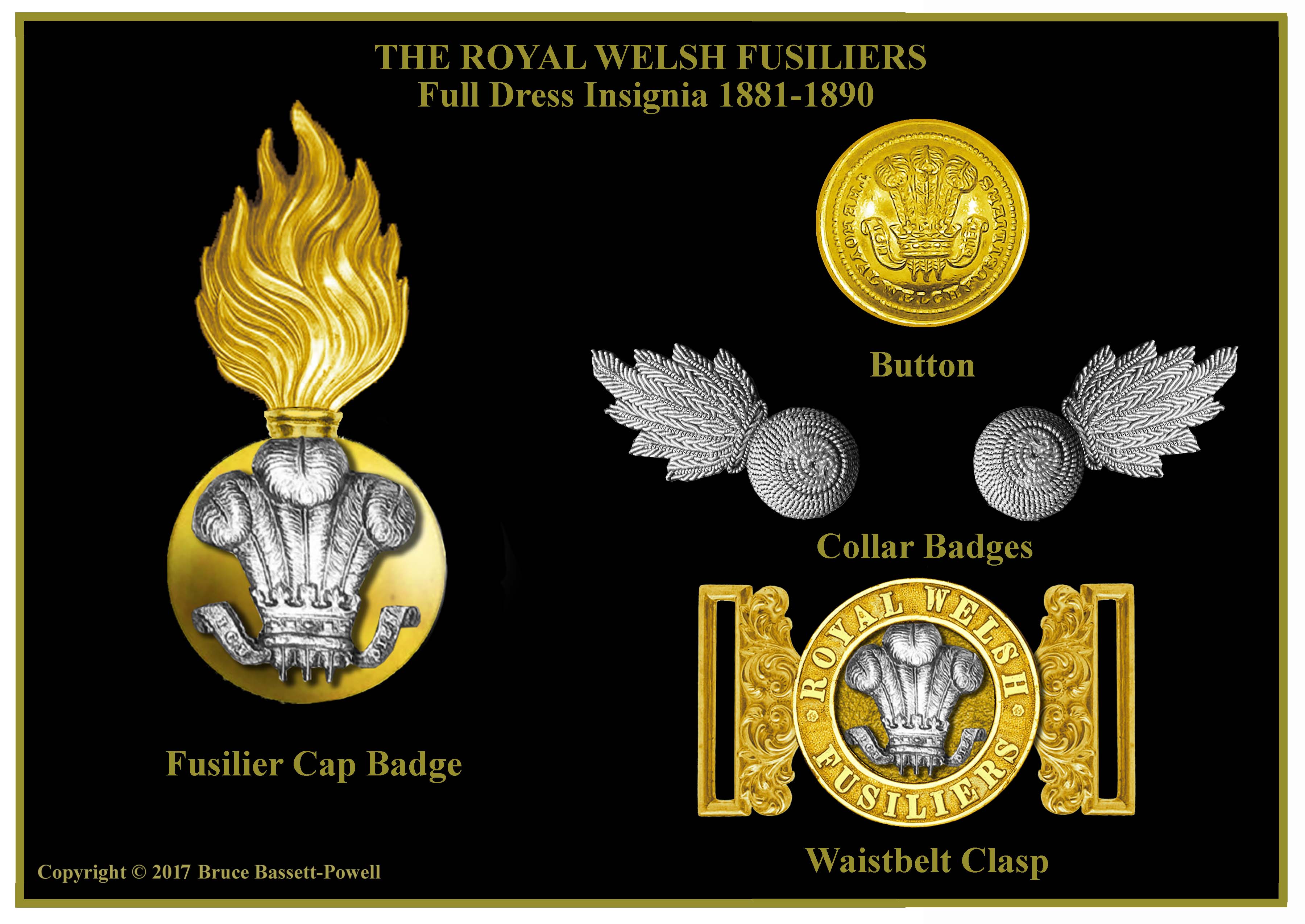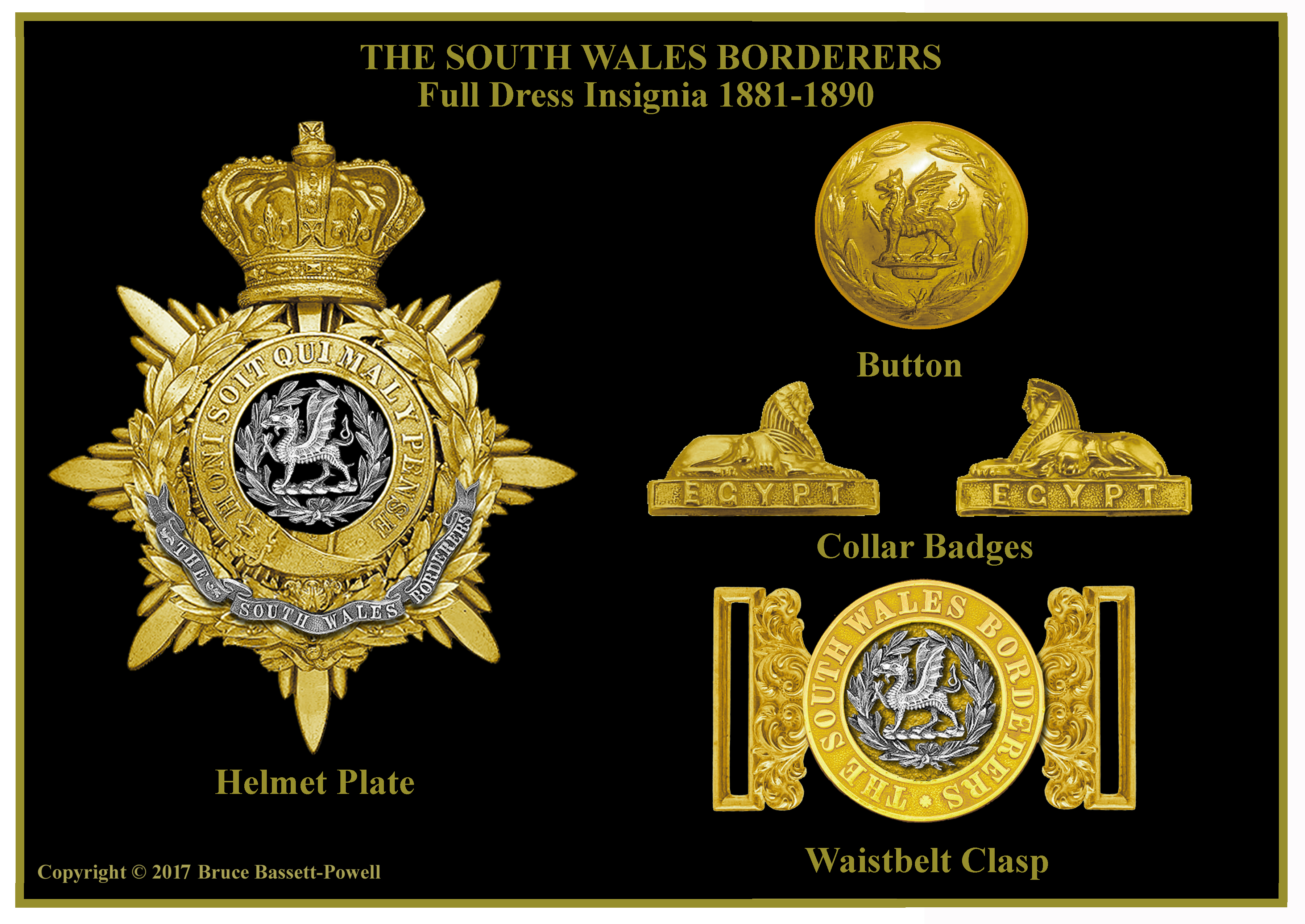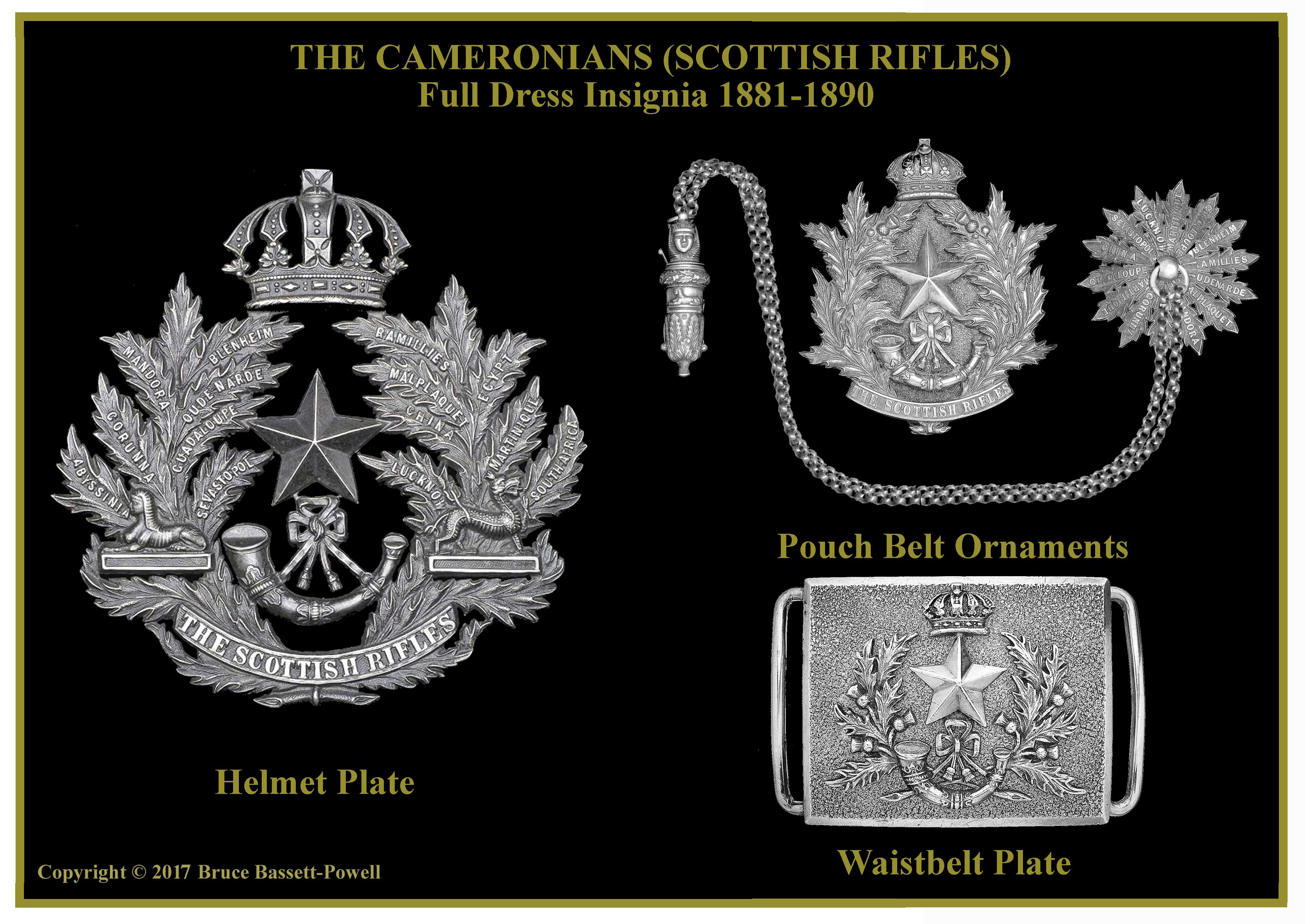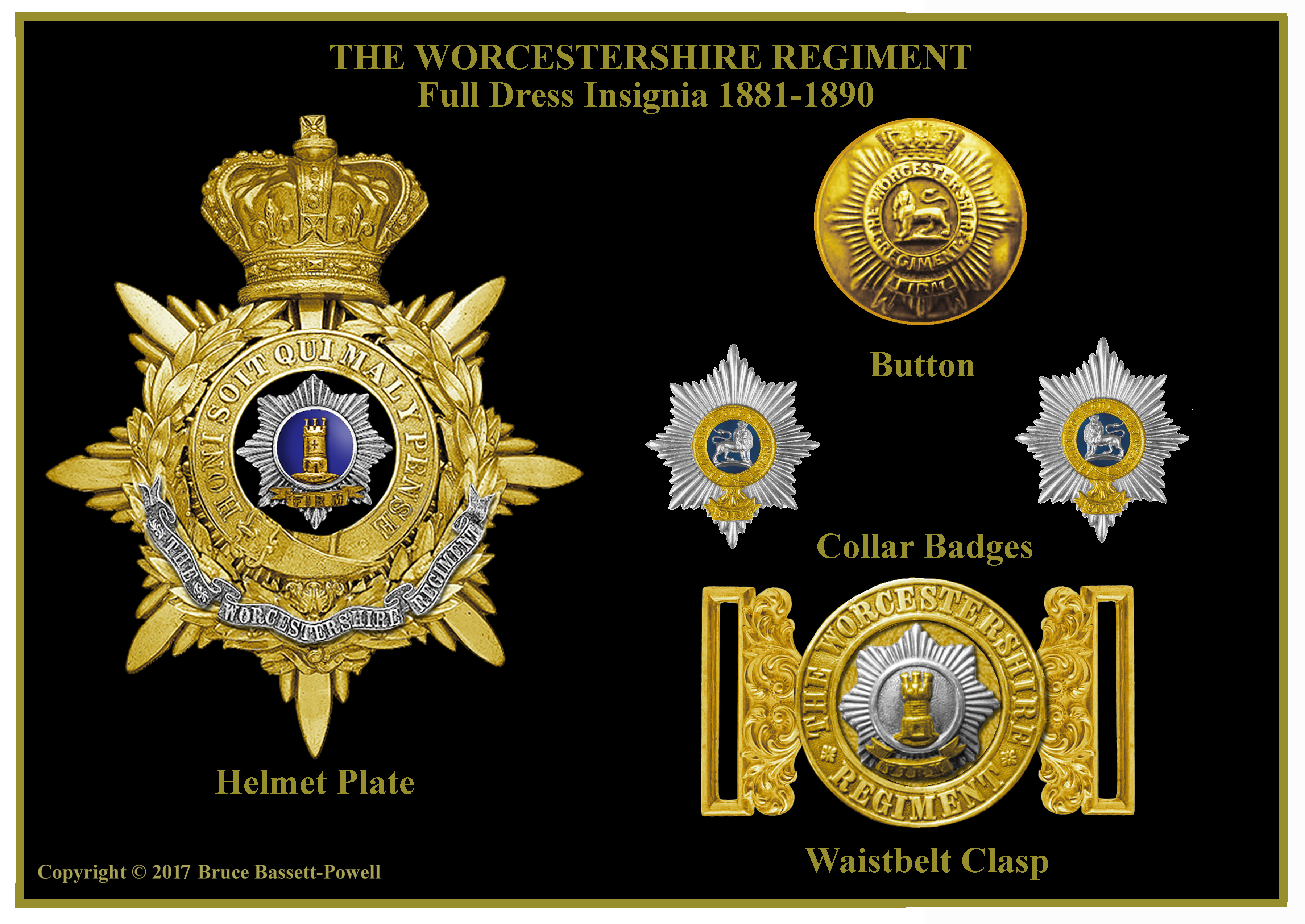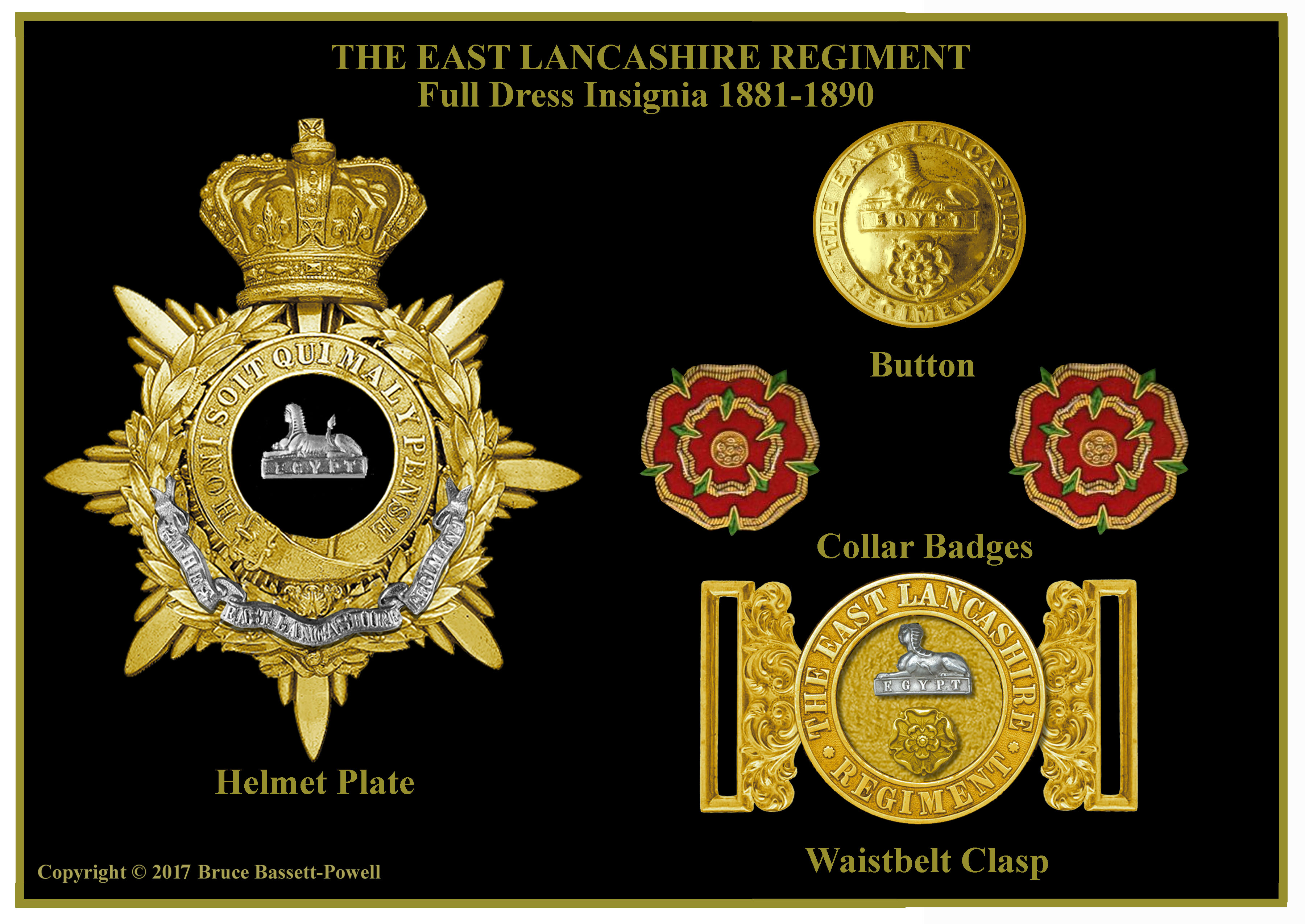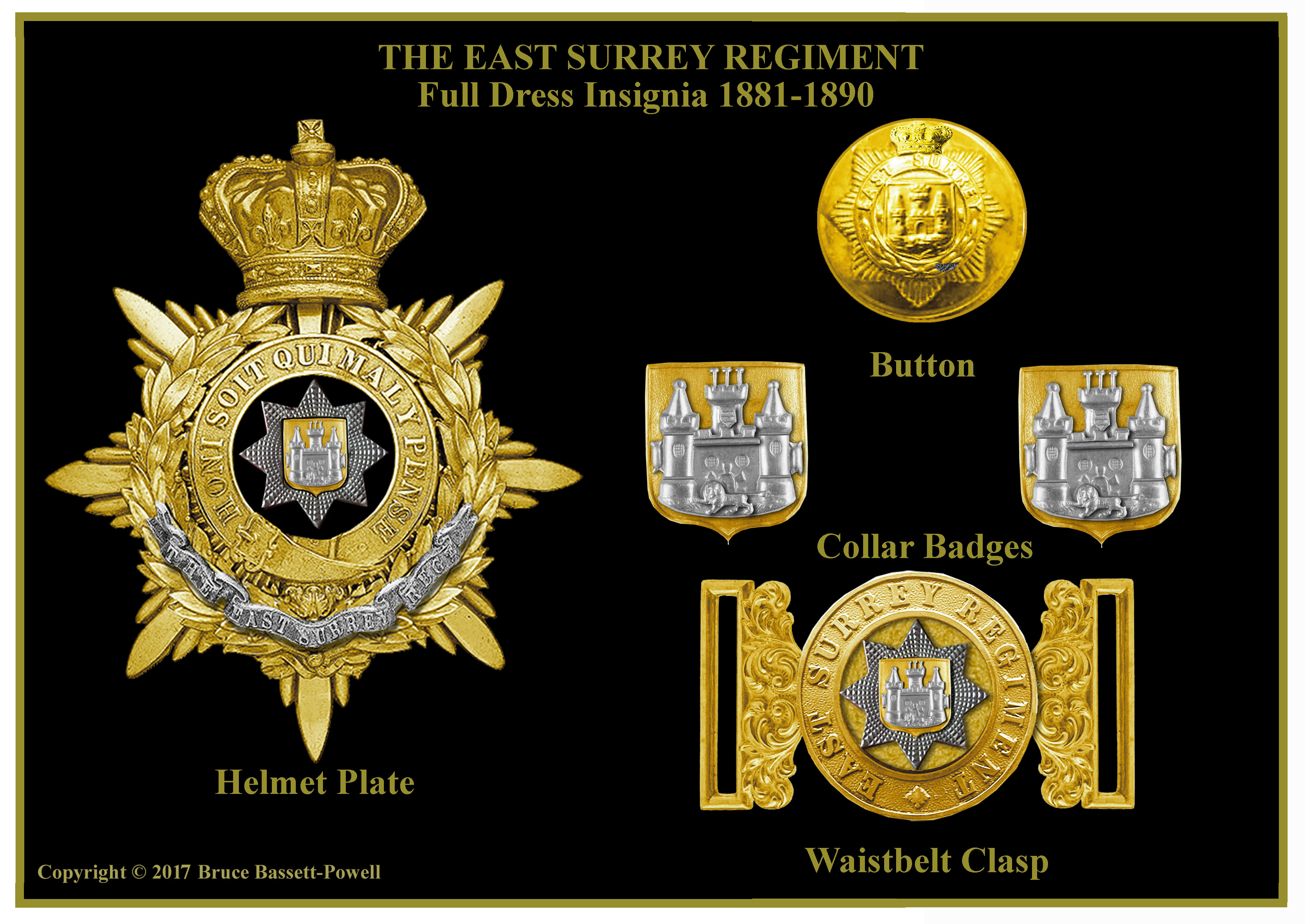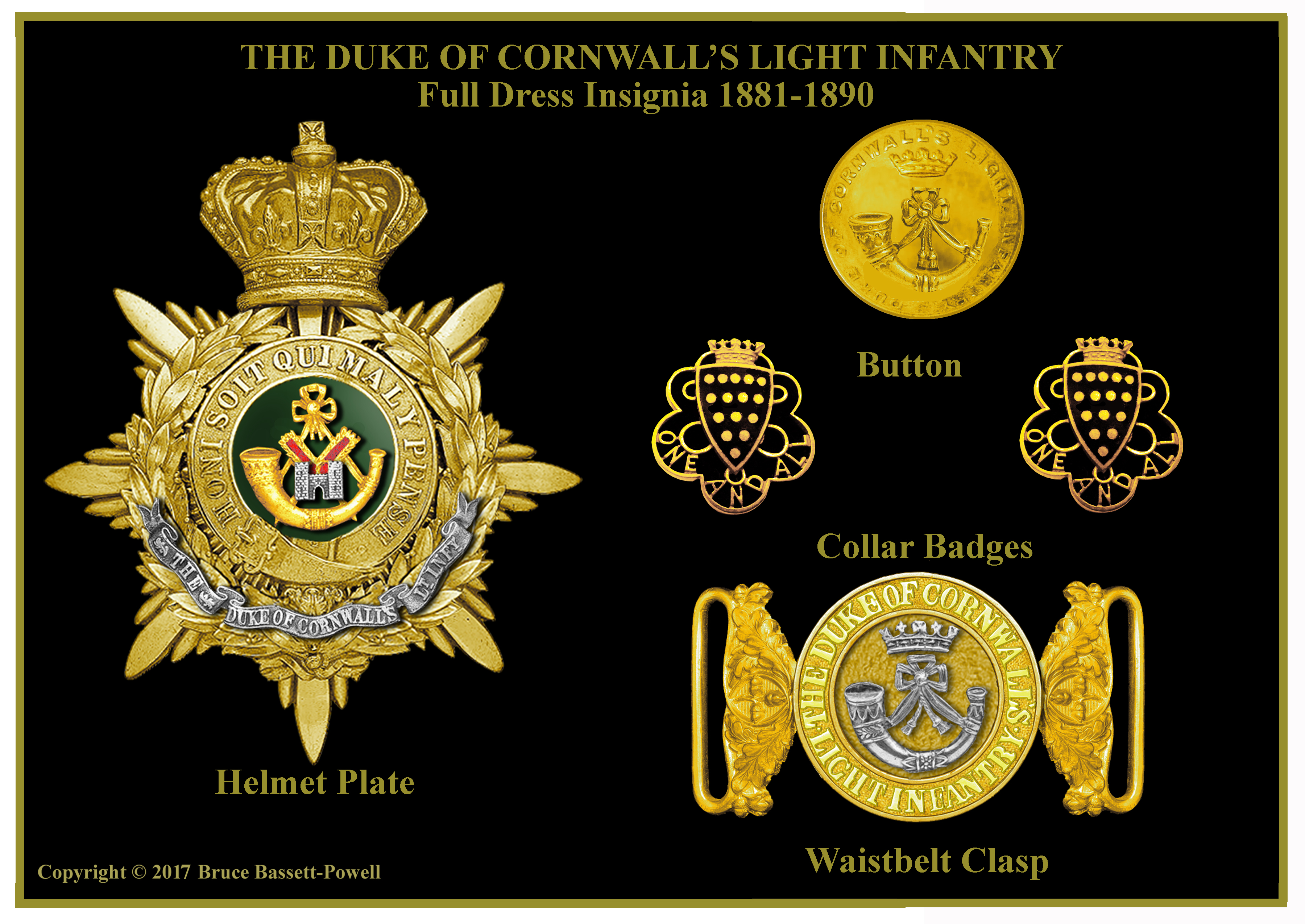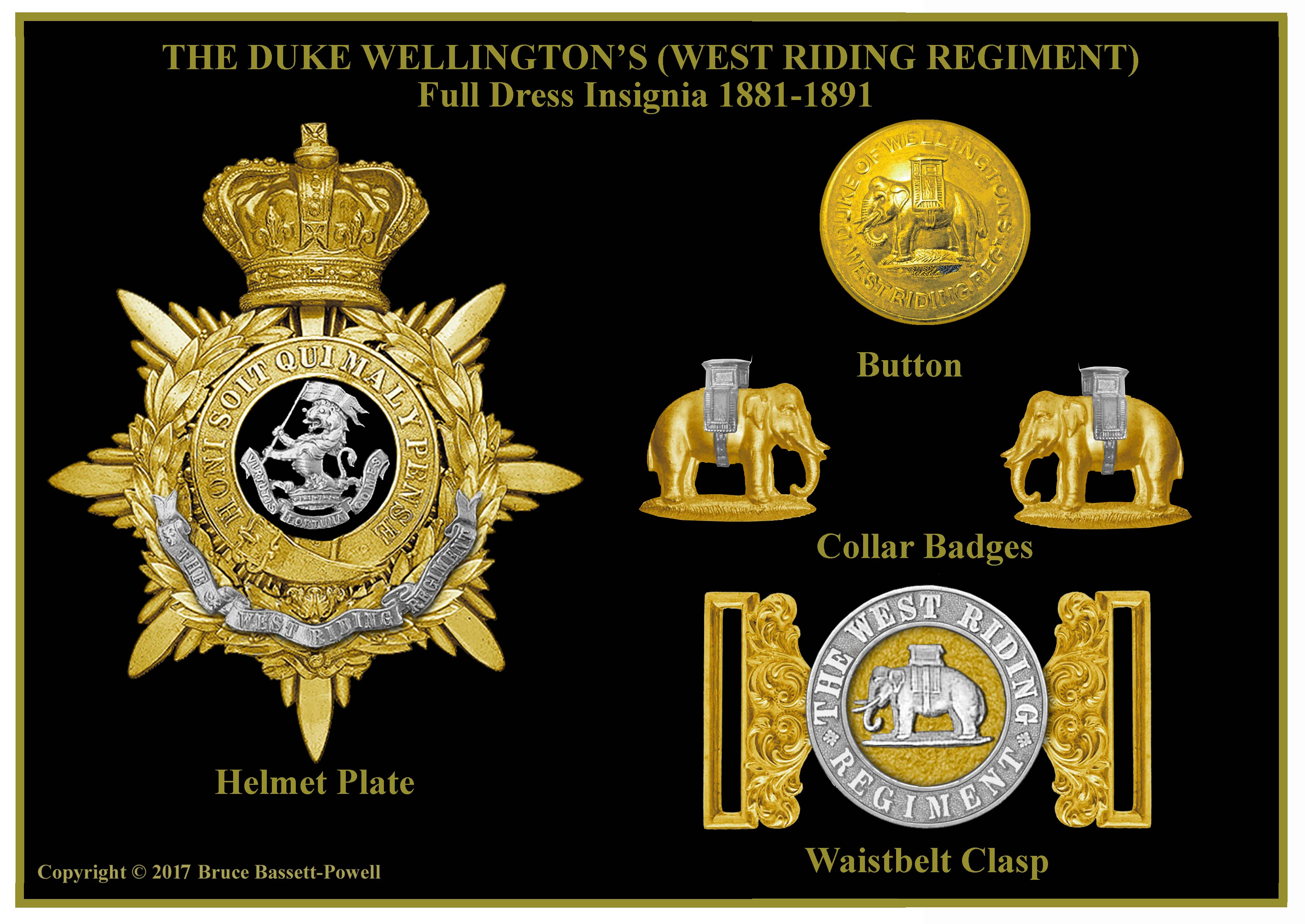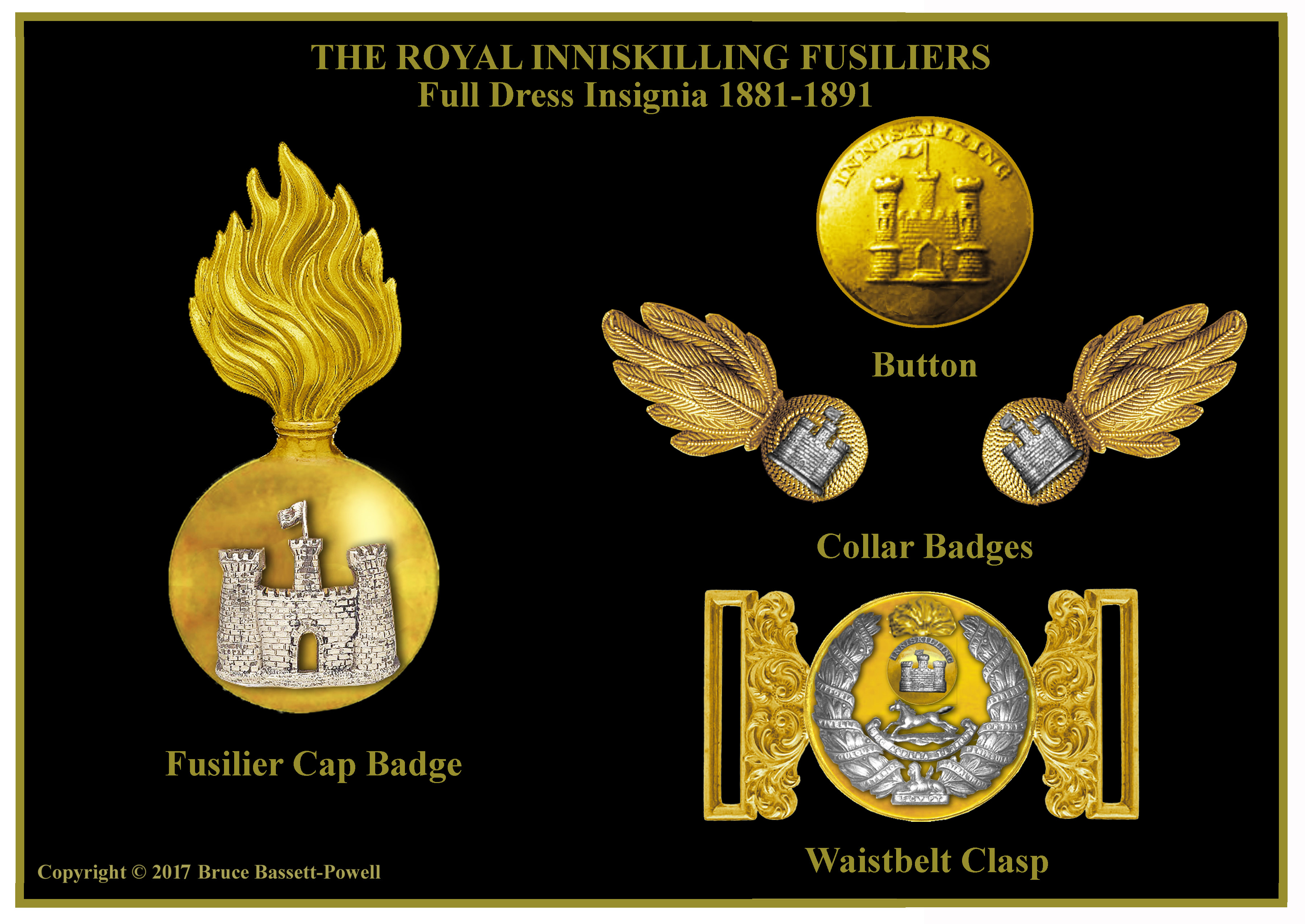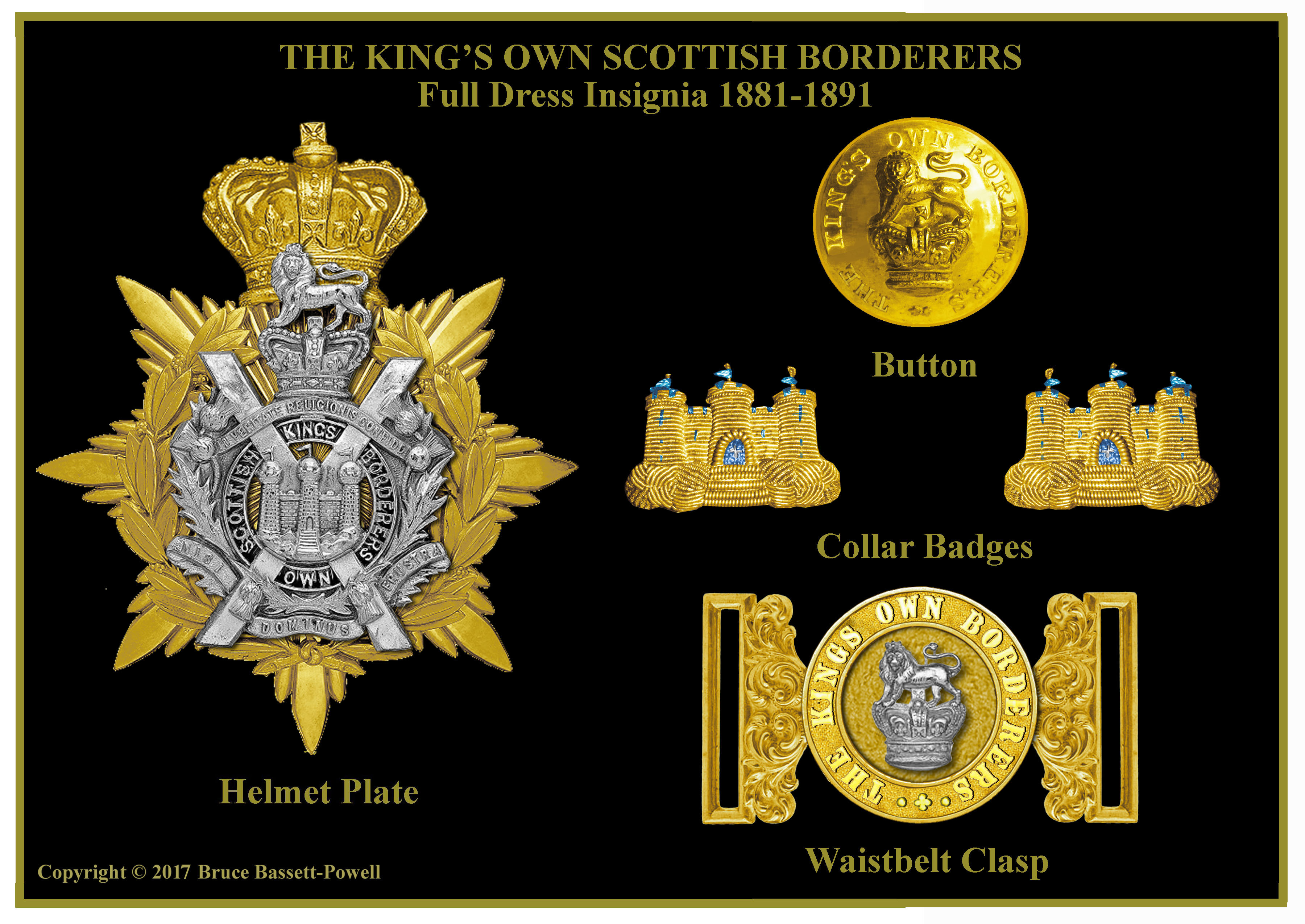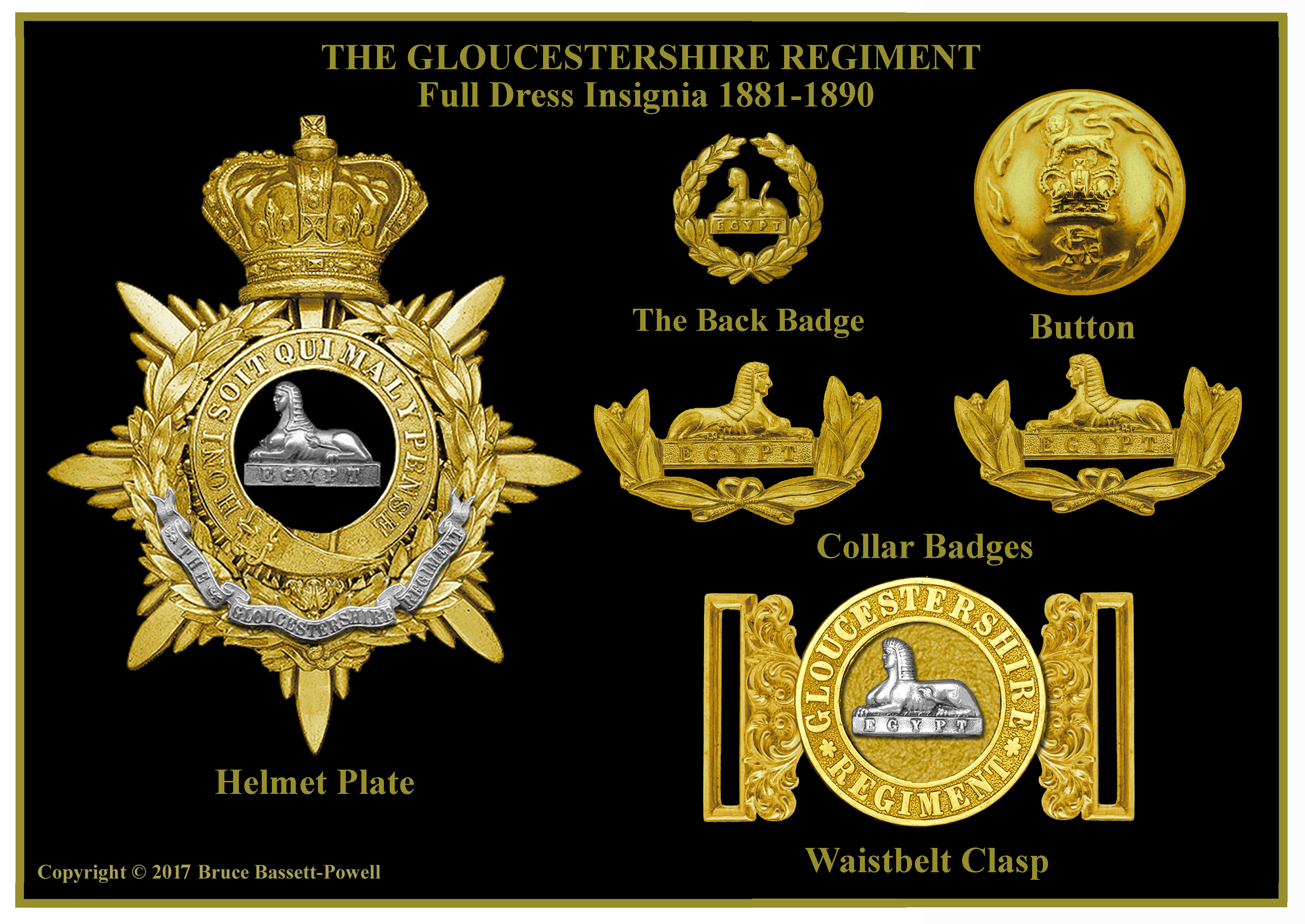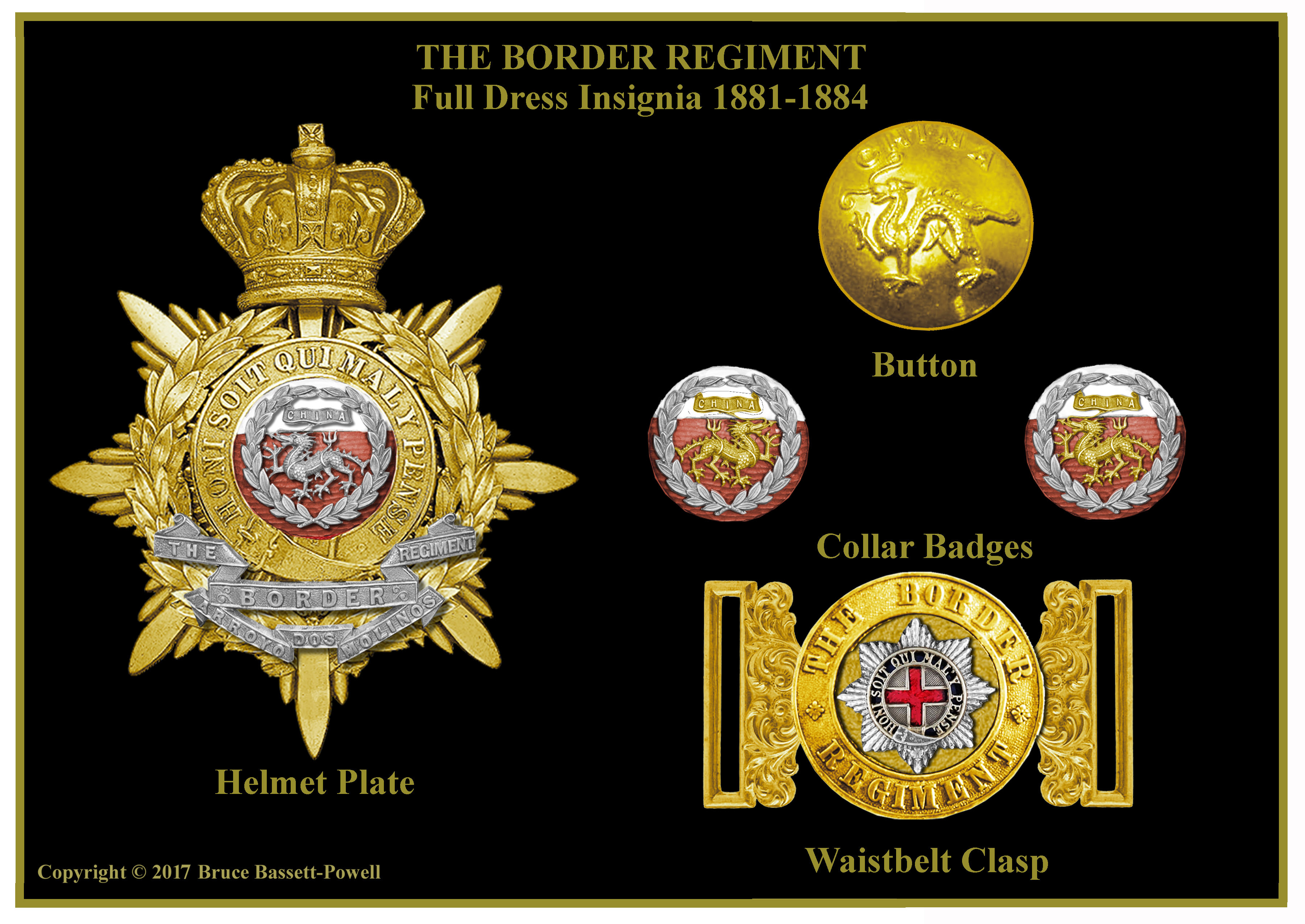Page 3
The Royal Welsh Fusiliers Formerly the 23rd of Foot. The Coronet, Plume and motto of the Prince of Wales, the badge of the Principality of Wales and decreed by regulations in 1747. By the same decree, the heraldic Red Dragon, an ancient badge of Edward the Black Prince. Several, other honours, are not worn on insignia. A grenade, adopted when the regiment were first titled as fusiliers, in 1714.
The South Wales Borderers Formerly the 24th of Foot. The Sphinx, superscribed ‘Egypt’, commemorates the services of the regiment in Egypt, 1801. Also, a Wreath of Immortelles, awarded by Queen Victoria to commemorate gallantry and sacrifice during efforts to save the regimental colours and in memory of the defence of Rorke’s Drift, 1879. Additionally, the Dragon of Wales, which had previously been the badge of the Royal South Wales Borderers Militia.
The King’s Own Scottish Borderers Formerly the 25th of Foot. The Royal Crest and motto In Veritate Religionis confido, conferred on the regiment by King George III in 1805. Also the castle of Edinburgh and motto Nisi Dominus frustra, authorised in 1832. Some other honours are not worn on insignia.
The Cameronians (Scottish Rifles) Formerly the 26th and 90th Foot. ALight Infantry Bugle-horn, adopted when the Light Infantry title was awarded to the 90th Foot in 1815. A Mullet, or Spur Rowel, was an emblem used by various branches the Douglas family, one of which was headed by the Marquis of Douglas, whose son James Douglas, Lord Angus, raised the 26th (Cameronian) regiment. Also, the Sphinx, superscribed ‘Egypt’, commemorates the services of both regiments in Egypt in 1801. The Chinese Dragon, superscribed ‘China’, commemorates the services of the 26th Foot in China.
The Inniskilling Fusiliers Formerly the 27th and 108th of Foot. The Castle of Inniskilling with St George’s colours flying and the name Inniskilling over it, authorised by Royal Warrant in 1751. A Grenade, adopted when the 27th and 108th became a fusilier regiment in 1881. Some other honours are not worn on insignia.
The Gloucestershire Regiment Formerly the 28th and 61st Foot. The Royal Crest, an old badge of the 28th. Also the Sphinx superscribed ‘Egypt’, awarded to the 28th and 61st to commemorate their services in Egypt, 1801. Additionally, the Back Badge, to commemorate the gallantry of the 28th at the battle of Alexandria, when they were attacked from both front and rear and turned to face both ways.
The Worcestershire Regiment Formerly the 29th and 36th of Foot. The Lion and Royal Crest and an Eight Pointed Star. Both were old badges of the 29th. Also the motto ‘Firm’, whose origin is not known, but recorded as worn by the 36th since at least 1773. Additionally, a Round Tower of Worcester Castle, an old badge of the Worcestershire Militia.
The East Lancashire Regiment Formerly the 30th and 59th of Foot. The Sphinx superscribed ‘Egypt’, commemorates the services of the 30th for services in Egypt, 1801. The Red Rose of Lancaster, which had been an old badge of the 5th Royal Lancashire Militia.
The East Surrey Regiment Formerly the 31st and 70th of Foot. The Arms of Guildford, adopted as a badge by the regiment in 1881. A star, which had been the old badge of the 3rd Royal Surrey Militia.
The Duke of Wellington’s Regiment Formerly the 33rd and 76th of Foot. The Crest and Motto of the Duke of Wellington, adopted because the 33rd was the first regiment to be commanded by the Duke and is the only one to be named after a subject. The Elephant and Howdah, conferred on the 76th to commemorate their long and distinguished service in India.
The Duke of Cornwall’s Light Infantry Formerly the 32nd and 46th of Foot. A Bugle Horn, adopted in 1858 when the regiment was given the title Light Infantry as recognition of its epic defence of the Residency at Lucknow in India. The Coronet of the Duke of Cornwall and the Arms of the Duchy, which had been the badge of the Royal Cornwall Rangers Militia. Two Red Feathers, a distinction of the 46th, whose Light Company gained distinction at the Battle of Paoli in 1777. A Turreted Archway, representative of Launceston Castle, whose image appears on the Great Seal of the Duke of Cornwall.
The Border Regiment Formerly the 34th and 55th Foot. A Laurel Wreath, an old badge of the 34th which tradition said was in memory of the battle at Fontenoy. The Dragon superscribed ‘China’, awarded to the 55th to commemorate their services in the China War. A Maltese Cross, adopted in 1881 as an old badge of the 34th. The Star of the Garter, worn on the waist belt clasp, was originally the badge of the Royal Westmoreland Militia. The Red and White Tuft, originally a hat adornment in memory of the 34th’s gallantry at Arroyo dos Molinos, and subsequently represented by a red and white background to cap insignia.
REVISED
AUGUST 27TH 2018
REVISED
APRIL 21ST



